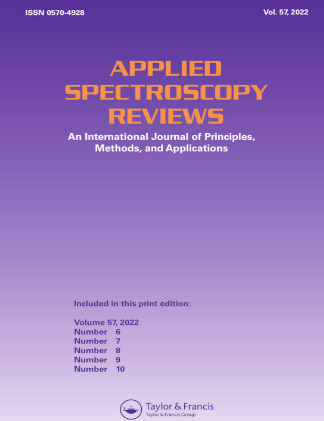红外光谱与法医昆虫学的融合:三个研究方向综述
IF 5.4
2区 化学
Q1 INSTRUMENTS & INSTRUMENTATION
引用次数: 0
摘要
摘要红外光谱(IR)技术在法医学和昆虫学领域所显示的优势引起了法医昆虫学家的兴趣,在昆虫鉴定、肠道成分分析、分布分析和发育时间估计等方面取得了可靠的结果,已成为法医昆虫学(FE)领域强有力的分析工具。在本文中,我们总结了目前的挑战和未来的前景,在有限元的三个主要研究领域,即死后区间,腐肉和鉴定。利用过去三十年(1998-2023)的数据,我们报告了IR在提高诉讼案件效率和FE实验室研究的科学有效性方面的潜力。结果表明,虽然红外光谱技术还有很长的路要走,可及性有待提高,但它具有成为有限元可靠研究技术的潜力。关键词:红外光谱;法医昆虫学;尸间隔鉴定;写作-原稿准备:张若楠;写作-审编:王宇;融资收购:王宇;监督:王宇。所有作者都对手稿以前的版本作了评论。所有作者都阅读并批准了最终的手稿。符合道德标准利益冲突作者无利益冲突;包括财务或其他方面的参与,这可能会使本文的主题产生偏见。数据可用性声明当前研究过程中产生的数据集可根据通讯作者的合理要求提供。项目资助:国家自然科学基金项目(批准号:82002007、32070508和32270545),江苏省高等学校重点学科发展项目。本文章由计算机程序翻译,如有差异,请以英文原文为准。
Integration of infrared spectroscopy and forensic entomology: a review of three research directions
AbstractThe advantages demonstrated by infrared spectroscopy (IR) in forensic science and entomology have aroused the interest of forensic entomologists and it has become a powerful analytical tool in the field of forensic entomology (FE) as it yields reliable results in insect identification, gut content analysis, distribution analyses, and developmental time estimations. In this paper, we summarize the current challenges and future perspectives of IR in three main research areas of FE, namely postmortem interval, carrion, and identification. With data from the past three decades (1998-2023), we report on the potential of IR to improve the efficiency of litigation cases and the scientific validity of FE laboratory research. Results show that although IR still has a long way to go and its accessibility needs to be improved, it possesses the potential to become a reliable research technique in FE.Keywords: Infrared spectroscopyforensic entomologypostmortem intervalcarrionidentification Author contributionsFormal analysis and investigation: Ruonan Zhang; Writing - original draft preparation: Ruonan Zhang; Writing - review and editing: Yu Wang; Funding acquisition: Yu Wang; Supervision: Yu Wang. All authors commented on previous versions of the manuscript. All authors read and approved the final manuscript.Compliance with ethical standardsConflicts of interestThe authors have no conflicts of interest; including involvement, financial or otherwise, that might potentially bias the subject of this article.Data availability statementsThe datasets generated during the current study are available from the corresponding author on reasonable request.Additional informationFundingThis work was supported by the National Natural Science Foundation of China (grant numbers 82002007, 32070508 and 32270545), Priority Academic Program Development of Jiangsu Higher Education.
求助全文
通过发布文献求助,成功后即可免费获取论文全文。
去求助
来源期刊

Applied Spectroscopy Reviews
工程技术-光谱学
CiteScore
13.80
自引率
1.60%
发文量
23
审稿时长
1 months
期刊介绍:
Applied Spectroscopy Reviews provides the latest information on the principles, methods, and applications of all the diverse branches of spectroscopy, from X-ray, infrared, Raman, atomic absorption, and ESR to microwave, mass, NQR, NMR, and ICP. This international, single-source journal presents discussions that relate physical concepts to chemical applications for chemists, physicists, and other scientists using spectroscopic techniques.
 求助内容:
求助内容: 应助结果提醒方式:
应助结果提醒方式:


